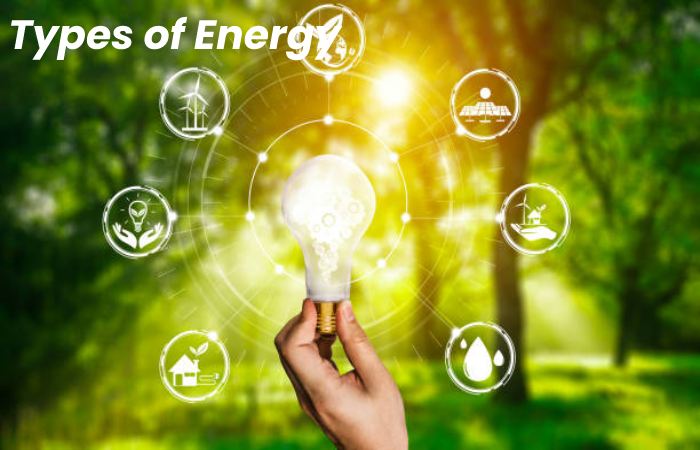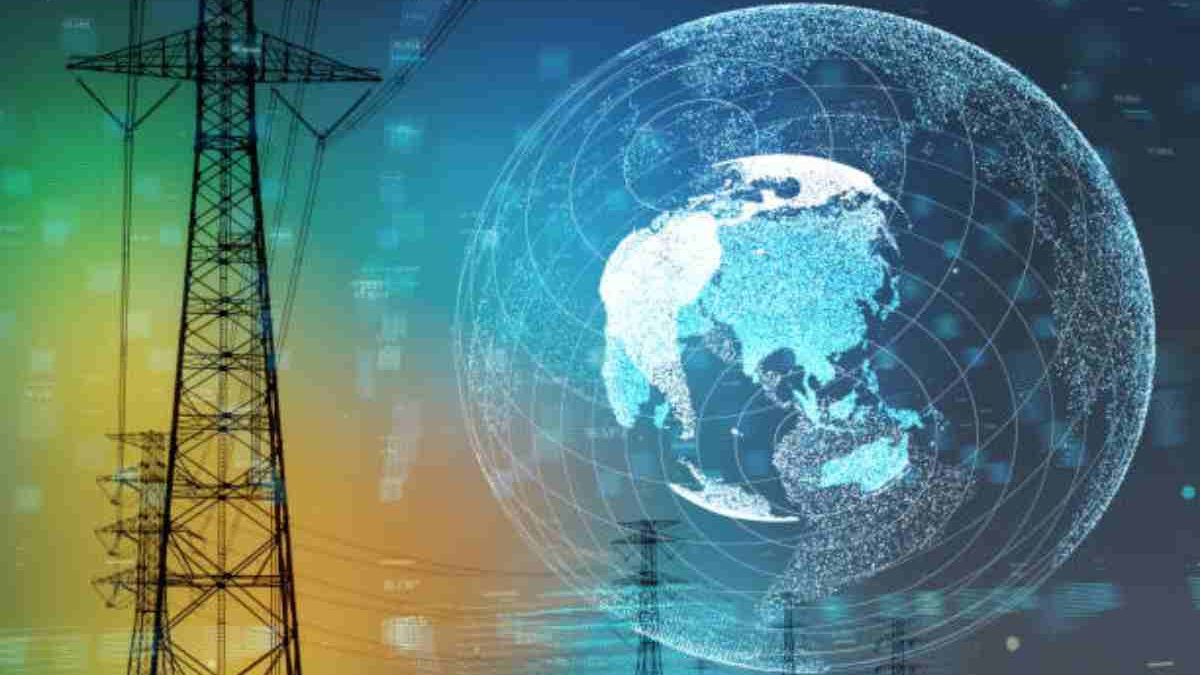Table of Contents
What is Energy?
Energy is the primary form of living for all active beings. There are different arrangements on this planet. The sun measured as the elemental form on the Earth. Physics regards as a quantitative property that can transfer from an object to perform work. Hence, we can describe it as the strength to do any physical activity. Therefore, they say, Its is the ability to do work.
According to conservation laws, It can neither create nor destroyed but can only rehabilitate from one form to another”. The SI unit of Joule in this article, let us understand in part about units and different forms of energy.
Units of Energy
The International System of Units of the dimension is Joule. Joule is a resultant unit, and it is identical to the point old in smearing a force of one newton through the coldness of one meter. The component of power is called James Prescott Joule afterwards. However, management express in numerous other units not part of the SI, such as ergs, calories, British Current Units, kilowatt-hours, and kilocalories, which require a conversion influence when spoken in SI units.
Types of Energy

Radiant Energy
Radiant states to the type trips by sprays or particles. This is twisted through electromagnetic waves and is most commonly experienced by humans in heat. Following are a few instances of radiant.
When you turn on an incandescent light corm, it gives off two forms of Radiant. First, there is noticeable light and heat that is generates. Both these generate dynamism are a form of radiant.
Sunshine is an instance of radiant energy
Thermal Energy
Besides being knowledgeable in heat or warmth, thermal is comparable to radiant. While radiant mentions waves or particles, thermal describes the activity level among the particles and bits in a thing. This is the only difference between healthy and thermal. Particular examples of thermal include:
The geothermal that comes from the deterioration of natural minerals and the volcanic activity of the mud is an example of thermal.
When you heat the pizza in the oven, you raise the temperature of the pizza. The molecules that make up the pizza move more quickly when the pizza is piping hot.
The warmth emanating from the engine is an example of thermal.
Sound Energy
The vibrations that reach the humanoid ear are knowledgeable by humans as sound. The trouble moves in waves through a medium like air and reaches our eardrum. On attainment of the eardrum, these vibrations convert into electrical signs and direct to the brain, which we interpret as the sense of sound.
Electrical Energy
The flow of negatively charged electrons everywhere a circuit results in electricity commonly called electrical energy.
Mechanical Energy
Mechanical energy is related to the automatic movement of substances.
Potential Energy
Potential is the oomph stored in an object or system of things. Energy can transform into a more obvious form of kinetic energy.
Gravitational Energy
Gravitational potential is stored in an object due to its vertical position or height. A volume on a high bookshelf has a higher gravitational potential than the book at the bottom.
Elastic Energy
Elastic potential energy store due to applying a force to deform a flexible object. The animation store until the power is removed and the thing springs back to its original shape, doing work. For example, the deformation could involve compressing, widening or winding the thing.
Chemical Energy
Chemical potential energy is warehoused in the biological promises of the substance. It is the Chemical that can be engrossed and accessible due to a change in the particle number of the assumed species.
Electric Potential of Energy
The electric potential energy that remains wanted to move a charge against an electronic arena.
Some of the samples of electric potential comprise:
- An incandescent bright corm that twist-off
- A radio tower that is not working
- A black-light turn-off
- A television before it crook on
- Optional video on Kinetic Energy
Natural Sources of Energy
In a sense, the whole thing is a natural source of energy. Once we ponder points from relic fuels or electricity manufactured by humans, all of this originates from natural sources. we consume just develop ways of by the power stored inside these capitals for a very extended time.
The sun is the usual energy source since all on Earth comes from the interstellar at the centre of our solar system. However, natural might also refer to renewable or non-polluting. Solar, breeze, hydro, geothermal, and biomass could be more “natural” than fossil fuels or nuclear power.
Conversion of Energy: Transfer and Transform
We know the energy can be moved from one form to another; the drive of power from a unique site is known as liveliness transfer. We notice many transformations fashionable about us.
Following are the four habits through which can move:
Mechanically – By the act of power
Electrically – Electrically
By Radiation – By Light surfs or Sound surfs
By Heating – By conduction, convection, or energy
The process which consequences in the energy altering from one form to another is known as transformation. While can transform or move, the total quantity of power does not alter – this is called conservation.
Different of Energy
Scientists define it as the aptitude to do work. People use to gait and bicycle, move cars along roads and boats finished water, cook food on stoves, brand ice in freezers, light our families and offices, manufacture products, and send cosmonauts into interstellar. Modern cultivation is possible as people have learned how to change from one procedure to extra and then use it to do work.
There are many different forms of energy counting:
- Heat
- Light
- Motion
- Electrical
- Chemical
- Gravitational
Kinetic or Working Energy
Energy can stand converted after one form to additional. For example, the food a person eats covers chemicals, and a person’s body stores this pending they use it as kinetic during work or play. Likewise, the stored chemical in petroleum or natural gas and the kinetic of water flowing in streams can convert to electrical power, light and heat.
Energy sources can be characterised as renewable or non-renewable.
There are many different bases of energy, which container be alienated into two basic categories:
Renewable sources can be quickly replenished.
Non-renewable sources cannot be easily filled.
Renewable and non-renewable sources can be used as primary sources to produce valuable such as heat. They can use to make secondary sources such as electricity and hydrogen.
Energy
In physics, is the capacity for doing work. It may exist in kinetic, thermal, electrical, chemical, nuclear, or other forms. There are, moreover, heat and sweat—i.e., In the process of transfer from one body to another. After it transfer, the point is always designated according to its nature. Hence, heat transfer may development thermal, while work may manifest itself in mechanical.
Chris
Here are specific basic concepts that will help our state. First, power requires to the style of possessions to change. For example, we need use to change this No. 2 write from one practical writing utensil into two less valuable pieces.
Brittny
Energy is the ability to do work. But we’re not chatting about going to work or responsibility for your chores. We’re talking about work as straightforward in the physical sciences. Work is the application of the power to move a thing in the way of the staff. Once you pedal a bicycle or when an electric motor lifts an elevator.
Law of Conservation of Energy
The law of management is one of the fundamental laws in physics. It directs the microscopic motion of separate particles in an organic reaction. The law of conservation of statuses that “In a shut system, i.e., a scheme that isolates from its surroundings, the entire of the scheme preserves.” According to the rule, the total in a scheme conserved even though power transformation occurs. A point can neither shape nor destroy and it can only convert from one form to another.
Although there are many procedures of energy, it approximately brands into:
- Potential energy
- Kinetic energy
Kinetic links the object’s motion. Things in motion are capable of causing an alteration or are capable of doing work. To better understand, let us know the reason for a wrecking ball. A wrecking sphere in motion is cast-off to do work such as demolition of buildings, stones, etc. Even a slow-moving wrecking ball can instigate a lot of damage to another object, such as an empty house. However, a wrecking ball in motion does not make any effort.
Another example of kinetic is the relates to atoms or particles’ constant, random activity. This is also known as thermal. The regular thermal of a group of bits is pardon we call temperature, and when current transfer between two objects, it’s known as heat.
Conclusion
Simply put is the aptitude to do work. Work in this setting is when a force acts upon an object to cause an object’s displacement. There are three main components of work: passion, removal, and cause. It is the measurable amount of work that must do to an object to create these mechanisms.
Its is also preserves quantity with a finite amount in the universe, though there is a near limitless supply. It can measure and stow in various ways, but it is not a physical substance, even though it can rehabilitate directly into the matter.
Although we often hear or recite consumption, it’s never really consumed. Instead, it is a transfer between states and from one form or object to the next, always working on the process.
Also Read: Stable Coin Definition – Important, Future, Challenges and More


Review What is Energy? – Units, Types, Natural Sources and More.